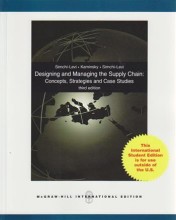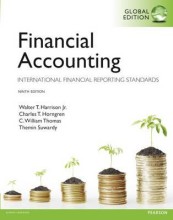De waarde van informatie - The Bullwhip effect
7 important questions on De waarde van informatie - The Bullwhip effect
Which main factors contribute to the increase in variability in the supply chain?
- Demand forecasting
- Lead time
- Batch ordering
- Price fluctuation
- Inflated orders
How does demand forecasting relate to the bullwhip effect?
How does lead time relate to the bullwhip effect?
- Higher grades + faster learning
- Never study anything twice
- 100% sure, 100% understanding
How does batch ordering relate to the bullwhip effect?
How does price fluctuation relate to the bullwhip effect?
How does inflated orders relate to the bullwhip effect?
Which four methods exist for decreasing or eliminating the bullwhip effect?
- Reducing uncertainty
- Reducing variability
- Lead-time reduction
- Strategic partnerships
The question on the page originate from the summary of the following study material:
- A unique study and practice tool
- Never study anything twice again
- Get the grades you hope for
- 100% sure, 100% understanding
































